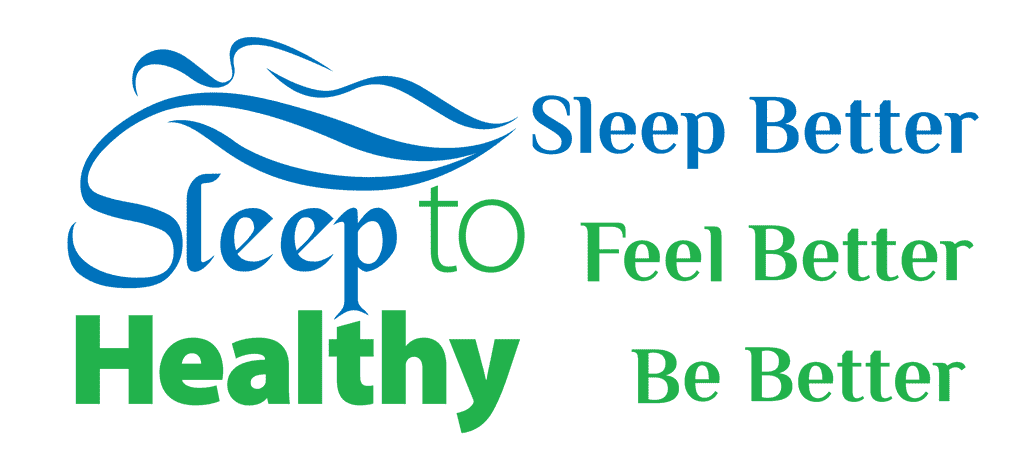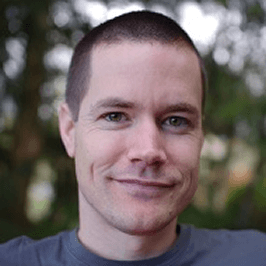Click title to see more…
The sleep to healthy website is now a 10 lesson course on curing insomnia.
This course is not a quick fix and it is not easy. The course is based on CBTi or Cognitive Behavioral Therapy for Insomnia. CBTi is the first-line insomnia treatment method endorsed by:
- The U.S. National Institute of Health and
- The British Association of Psycho-pharmacology.
- The American Academy of Sleep Medicine.
By the end of the “Cure Insomnia” course, students will have the knowledge and tools they need to cure their insomnia. Not just now, but for a lifetime.
Did I mention that it’s free?
Go to SleepToHealthy.com to get started.
Summary: Guest: Martin Reed, Insomnia Coach ®:
- Martin Reed tells about his struggles with insomnia and sleep restriction therapy success stories.
- The common issues most people with insomnia share.
- The biggest challenge for people with insomnia.
- 3 true statements about you and sleep.
- What motivates people to finally tackle insomnia.
- Martin’s approach: Cognitive Behavioral Therapy for Insomnia (CBTi).
- The aspects of CBTi that people have the most trouble executing.
- The most common underlying problem that interferes with sleep.
- The myth of the 8 hours sleep.
- How to tell if you are getting enough sleep.
- Why we have trouble falling asleep.
- The Sleep Forum, what its for, what he has learned while moderating it, how to benefit, what pitfalls to avoid.
- How to reconcile “sleep well for better health and well being” with “don’t worry about sleep as it prevents you from sleeping well.”
- Where people have the most problem with sleep hygiene.
- The improvements people receive from sleep coaching.
- What Martin Reed would put on a
- His recommendation for something you can do today, to sleep better tonight so you feel and function better tomorrow.
Note: We encourage you to listen to the podcast with a portable device (via a podcast app is best) rather than sitting in front of the computer.
Links mentioned in the show:
Martin Reed’s website: https://insomniacoach.com/
Mr. Reed’s two-week free sleep training course: https://insomniacoach.com/sleep-training/
Facebook: https://www.facebook.com/insomniacoach/
Twitter: @insomniacoach, https://twitter.com/insomniacoach
YouTube Channel: https://www.youtube.com/channel/UCL5LsLUeVA2j_Vsl5625shQ
Instagram: https://www.instagram.com/myinsomniacoach/
Episode 10: Cognitive Behavioral Therapy for Insomnia (CBTi): https://sleeptohealthy.com/e10/
Show notes with approximate time they occur in the episode:
(Note: For your convenience, the following is paraphrasing from the interview, not exact quotes. For exact wording, listen to that part of the episode)
Introduction (the host, from the audio):
In high school, I played many sports: The traditional basketball and soccer but also cricket and rugby. Regardless of the sport, we always had a coach, someone with more experience and knowledge of the game who taught us, encouraged us, held us to account and helped us improve our skills. Even seasoned professional athletes have coaches. So why not a coach for sleep?
As a listener to this podcast, you might be solidly in the self-help group, someone who prides themselves on learning and improving on your own. But what if you find yourself learning lots, but not improving your sleep to the point you desire.
Today we will be talking with Martin Reed, the Insomnia Coach®. Martin offers a free 2 week insomnia training course, runs an on-line sleep forum and provides one on one sleep coaching. So he understands what we can achieve on our own, and when we need a supportive coach. He has many sleep restriction therapy success stories.
Martin has his masters degree in health and wellness education, is a certified health education specialist, holds Certification in Clinical Sleep Health, and is an affiliate member of the American Academy of Sleep Medicine. Martin is the founder of Insomnia Coach® at insomniacoach.com.
Martin, welcome to this episode of the Sleep …… to Healthy Podcast…..
Interview
1:50 – Martin read talks about his struggles with insomnia and how he handled it.
5:50 – How his students struggle with sleep before they start his course.
Many of the students struggle with the same issues. Primarily it is anxiety and worry. They worry about sleep or the effects of poor sleep. Their bed can become associated with anxiety and worry rather than a place where they can relax. Also people have unrealistic expectations about sleep such as bad things will happen if they don’t get 8 hours of sleep.
7:40 – What are their biggest challenges to improve their sleep?
The problem is they don’t know what to do, they have tried lots of things, but nothing has been helping. They believe that they lost the ability to sleep.
9:00 – Martin comments on three statements he uses: You are capable of restorative sleep, You have not lost the ability to fall asleep or fall back to sleep and You can sleep without sleeping pills.
Having people know this is important so because they think they have lost the ability to sleep. Sleep is a core biological function like breathing. Anxiety and worry can postpone sleep, but eventually sleep will take over. Our bodies make us sleep, sleeping pills don’t make us sleep. They can reduce anxiety and arousal to make it easier, but the sleep is still be generated by our own bodies.
11:00 – What motivates people to finally make the effort to improve their sleep?
When it gets to a point where it really affects your quality of life. You feel tired all the time, it affects your productivity, you start to avoid things like going into work. Then they’re willing to put in the work.
12:30 – How the arousal system can hijack the Circadian rhythm and the Sleep Drive systems.
There are three types of arousal. Cognitive arousal such as the thoughts and worries that make sleep difficult. The second is physiological arousal such as a racing heart or a sense of panic. And the third is a conditioned arousal where we’ve learned that the bed is a place of dis-ease and wakefulness. The states of arousal can override our natural sleep drives. The arousal is the body’s response to danger, so it takes it seriously. These responses are targeted by cognitive behavioral therapy for insomnia or CBT-i.
14:40 – The approaches he uses to deal with people’s sleep issues.
First the cognitive, which is a fancy way of saying how we think about sleep, so it means setting realistic expectations about sleep. The behavioral aspects are to reduce arousal and also increase the sleep drive and reset the body clock. Combined they are a great long-term solution for insomnia because they are skill-based so once you learn them you can apply them for life. If you have problems with sleep in the future, you just go back to your toolbox and implement the solutions. It includes sleep restriction therapy success stories.
16:10 – What aspects of cognitive behavioral therapy for insomnia, CBT-i, do people have the most trouble executing?
There are two and they are the most important components of CBTi. The first is sleep restriction. It has bad terminology problem because it suggests that were restricting sleep when in fact we’re just limiting sleep to your normal sleep time and reducing your time spent in bed to your sleep time. Reducing your time in bed to be closer to your total sleep time increases your sleep drive because you’re spending more time awake during the day. Also your sleep becomes more consolidated which improves the sleep quality. That helps you feel better during the day. The second component that tends to be a struggle is stimulus control. We want to associate the bed with sleep so that the bed becomes a strong trigger for sleep. The only way we can do this is to make sure that the only thing we do in bed is sleep. This means that if you go to bed and you’re not getting to sleep then you get out of bed. This also applies during the night. So get out of bed until you feel sleepy again and repeat the process as necessary. In the beginning you may be in and out of bed like a yo-yo all night. But there are many sleep restriction therapy success stories. Which is difficult. Just as it took time to build up the condition to associated with arousal, it will take time to learn to associate the bed with sleep.
20:30 – Insomnia can be s a symptom of an underlying problem. What are some root problems of people’s sleep issues?
Although some cases of insomnia have underlying issues such as stress, most cases do not. The most common cause is anxiety and worry, usually about sleep, or the consequences of poor sleep. This can lead to the wrong approach to sleep. And this makes the problem worse.
22:10 – The average sleep time after your training is 6.8 hours which is well below the 8 hours of sleep that we hear and see in the media. What is happening?
The idea that we need 8 hours sleep is a myth and is inaccurate. This triggers many cases of insomnia as people worry they are not getting the proper amount of sleep. People tell him that they had no problem with sleep until they tried to get more of it. Just as we wear different size shoes, we need different amounts of sleep. And we shouldn’t try to fit in the average of everybody else’s foot size and worried that are foot size is different. A German study showed that our need for Sleep decreases as we age, for instance an 80 year old needs only about six hours of sleep on average. But these are just averages as everyone needs a different amount of sleep. Adjust your sleep not on duration, but how you feel during the day and your judgment of the quality of your sleep. This is why there are so many sleep restriction therapy success stories.
25:10 – How can you tell if you are getting enough sleep?
Don’t make your judgment when you first wake up as you may experience sleep inertia. This is a groggy sleepy feeling when we first awake in the morning. It can last half an hour to an hour first thing in the morning. If you’re feeling productive, if you’re feeling reasonably energetic, then you are probably sleeping fine. If you are randomly falling asleep during the day then you probably have a problem. It is probably not insomnia, as insomnia is usually associated with general fatigue, not actually falling asleep. It’s very subjective, generally if you feel good during the day then your sleep is probably just fine.
27:10 Why do we have trouble falling asleep?
For many people it is because they go to bed before they are sufficiently sleepy. This leads to insufficient sleep drive. Sleep drive builds during the day, and the longer we have been awake and the more active we have been, the stronger the sleep drive. So if we didn’t sleep well the night before then we tend to go to bed early to compensate, but if our sleep drive is still too low we will not get to sleep. Another problem with sleep onset is anxiety and conditioned arousal and worry that happens when we go to sleep.
30:00 – What problems does the Sleep Forum help people solve?
When he had insomnia he felt quite alone, like other people didn’t get it, so when he told friends that he had insomnia they really didn’t understand. They thought that if they had one bad night sleep they had insomnia. So he thought that having a forum could help others connect with people with similar experiences.
31:40 – What has he learned from moderating The Forum?
That people have a lot in common with each other concerning insomnia, that they share many of the same issues. Many people think their situation is unique, but it’s not. Although there are many different triggers, people’s experience with insomnia is very similar. The other is people have a lot of unhelpful beliefs about sleep. They can have a lot of crutches and rituals that are really not helpful. The rituals can leave the person thinking that unless they do this same ritual every night that there was sleep will be even worse. Sleep hygiene, by itself, does not work to cure insomnia. Everybody with insomnia has tried sleep hygiene, but by itself it is not a cure. You can be helped when combined with cognitive behavioral therapy for insomnia, or CBTi, but by itself does not work. It can do harm in that people will try sleep hygiene and when it doesn’t work they come to the conclusion that there is something wrong with them and their sleep.
35:10 – How to get the most benefit from the forum.
Just be open and honest and share your story. Even if you don’t get a response or at get advice I can still help. Keep in mind that it is a peer support group and that he is not there all the time. Also, the advice you get there might not be the best advice for you. As people cure their insomnia, that they will not be in the forum anymore, so most of the content is about people were struggling with insomnia, not people who have who are now sleeping well. So you don’t get the success stories, and it can feel a bit more doom and gloom.
37:00 – What methods are combined with cbt-i, or cognitive behavioral therapy for insomnia?
His professional work is now 100% cbt-i techniques as he has seen how effective a method it is.
38:40 – We are told to sleep well for Better Health and well-being but not to worry about it. How do we reconcile these conflicts of interest?
Although we can’t control sleep, we can set the stage for sleep. He uses a surfer analogy: A surfer wants to catch the perfect wave. He can’t control the waves, but there are things he can do to increase the likelihood of catching the wave. We can do things to increase the likelihood that we will get a good night sleep. The things that we can do are going to bed only when we are sleepy, go to bed at the appropriate sleep window, getting out of bed at the same time each day, and getting out of bed when you can’t sleep. Those are the things that we have control over.
40:50 – Where do people have the most problems with sleep hygiene?
The biggest problem is keeping a regular sleep schedule. Most people focus on things like not exercising too close to bedtime, having a comfortable bed, reducing lights in the bedroom. But the problem with this is that many people ignore these rules but have a good night’s sleep. When sleep researchers need a control group which is known as the no-treatment group, they typically give them sleep hygiene as their goal. So focusing on sleep hygiene is not likely to help cure insomnia.
43:20 – The types of benefits clients receive from sleep coaching.
Clients are the ones that put the work in, he acts as a guide. Everyone who is willing to put in the effort sees improvement in their sleep. One of the measurements he uses is Sleep Quality. At the beginning on a scale out of 10 they will rate it at 3.8. After completing the course they will rate it at 6.8. About a month after completing the course it goes up to 7.4, after three months it is 7.8 out of 10, and after 6 months it is up to 8 out of 10. This is because they are learning skills that can continue to be improved with time.
46:30 – What Martin would put on a billboard about sleep.
You don’t need 8 hours of sleep a night. That myth is a major driver of sleep problems.
47:20 – What is something that listeners could do today, to sleep better tonight, so they can feel and function better tomorrow?
Have no expectations about how well or how poorly you will sleep tonight. Only go to bed when you feel sleepy enough for sleep.
48:00 – Resources Martin Reed has available.
Summary:
Let’s summarize some of the key points Martin Reed made today.
The first that came through loud and clear is to stop worrying about how much sleep you are getting. If you feel well rested, then you are doing fine. If you don’t, then get some help. But keep your eye OFF the clock.
The second is to focus on the things that actually help improve your sleep – sleep restriction and stimulus control. You know its a bit like work – you can be busy, or you can be effective. The two are often not the same. Don’t spend too much energy being busy with sleep hygiene. Do the heavy lifting of sleep restriction and stimulus control for the most impact.
The third is that when you learn good sleep skills, the skills can last you a lifetime and even allow your sleep to improve with time. So although learning sleep skills may be an effort and discomfort, the payback is enormous.
As always, you can find the detailed show notes about the interview with Martin Reed along with all the links at sleeptohealthy.com.
This concludes our episode for today.
Other episodes related to todays topic include:
- Episode 9 with Dr. Stephanie Silberman on Cognitive Behavioural Therapy for insomnia.








Sleep To Healthy Thoughts